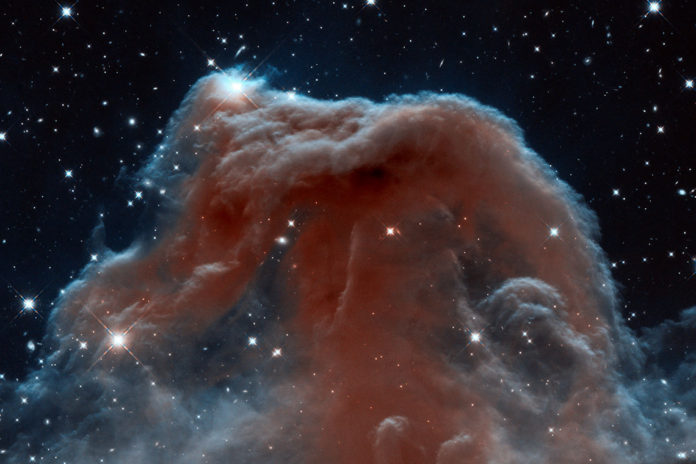There is a life cycle of stars. Stars are born, they mature, and then they die. Our sun is a star that is approaching the middle of its life cycle. As it gets older it will turn into a red giant.
Life on earth will not be possible when that happens. The sun will expand until its core turns into a white dwarf. The outer layers of the sun will become a planetary nebula. And then, our solar system will no longer exist.
Birth of a Star
Stars are born in areas of space that contain clouds of hydrogen gas and dust. These regions are called nebulae. The life cycle of stars begin in these nebulae. The gases and dust are attracted to one another into clouds. Then, the clouds begin to condense.
The clouds collapse into a ball which spins more and more rapidly. Pressures begin to build and the temperature of the ball of gas begins to rise. This ball is known as a protostar.
When the temperature of the gas ball is high enough, nuclear fusion begins. Fusion is the combining of hydrogen atoms into a helium atom. Nuclear fusion releases large amounts of energy. Once fusion begins, a star is born.
Life of a Star
A newly formed star obtains its energy from fusion. This energy creates surface temperatures that range from 2,000° Centigrade to more than 30,000° Centigrade. The hottest stars are blue-white in color. The cooler stars are red in color.
Fusion and Main Sequence: These stars are now in a stage called the main sequence. Fusion creates energy that creates outward pressure. This pressure pushes the star’s gases outward to space. At the same time, stars are giving off energy in the form of light and heat. This results in the gradual loss of materials from the star.
Gravity and Main Sequence: In the main sequence, this loss is balanced by gravity. Gravity pulls materials back towards the center of the star. A main sequence star is in a balance between pressures that push outwards and gravity that pulls materials inwards.
Loss of Balance: As the star burns up its hydrogen it will reach a point when there is none left. At his point fusion cannot occur. Without fusion, there is no outward pressure. The star is no longer in balance. Without outward pressure, the star begins to collapse and enters another stage in the life cycle of stars.
Death of a Star
Red Giants: Older stars begin to collapse when the star runs out of its hydrogen fuel. The core of the star is mostly helium at this stage. As the star begins to collapse, tremendous pressures are created. These pressures force helium to now begin a new type of fusion reaction. This time, the helium fuses into heavier materials such as carbon.
The pressures from the helium fusion reaction push outward. The star begins to expand into a much larger star than it was before. At this stage, the star becomes a red giant. Red giants can be over a hundred times larger than our sun. They are bright but have a lower temperature than a younger star.
White Dwarf: For stars with a smaller mass than our sun, the red giant expands and loses its outer layers. The remaining core shrinks and becomes a white dwarf star. The outer layers become planetary nebulae. The white dwarf continues to cool slowly until it has no more energy. The dwarf star then becomes a black dwarf star in the life cycle of stars.
Neutron Stars: Stars with a much larger mass than our sun will experience a violent explosion. Instead of becoming a dwarf star, they explode and are destroyed. This explosion of the star is called a supernova. A supernova will create a neutron star. The neutron star is very small, dense and made up of neutrons.
Black Holes: If the mass of the neutron star is great enough, it will become a black hole. Although very small, the mass of the black hole is very high. This creates a very strong gravitational pull. The pull is so great that all nearby matter and light are pulled into the black hole.
Reflections
Vocabulary
- black hole
- nebula
- supernova
Notes
- Stars have a life cycle – they are born, mature and then die.
- A stable star is one where the inward pull and outward push of forces are balanced.
- As a star ages, the inward and outward forces are no longer balanced and the star dies.

